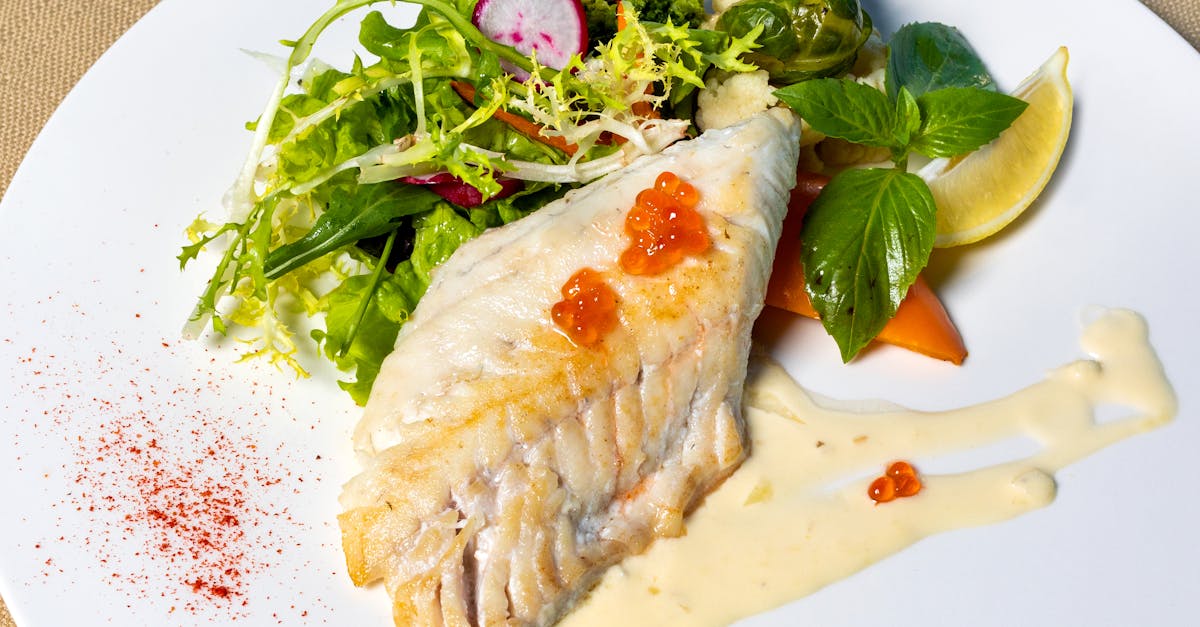Why You Should Include Frozen Haddock Fillet in Your Diet

Comparing Fresh and Frozen Haddock Fillet
Fresh haddock fillet is often lauded for its flavour and texture, making it a sought-after choice in many culinary applications. However, the availability of this fish can be inconsistent due to seasonal fishing and geographical factors. Fresh port deliveries may vary, leading to variations in quality and freshness depending on the source and handling conditions before reaching the consumer.
In contrast, frozen haddock fillet offers a reliable alternative that maintains its taste and nutritional value. The freezing process captures the fish at peak freshness, enabling long-term storage without compromising quality. Consumers can enjoy the same nutritional benefits regardless of when the fish was frozen, making it easier to incorporate into regular meal planning without worries about spoilage.
Nutritional Value Retention in Freezing
The freezing process can effectively preserve the nutritional value of haddock fillets, making them a viable option for health-conscious individuals. Essential nutrients, including proteins, omega-3 fatty acids, and various vitamins, remain intact when frozen promptly after catch. This rapid freezing not only maintains the quality but also ensures that the fish retains its beneficial properties even months later.
Studies show that frozen fish can contain similar, if not better, levels of nutrients compared to their fresh counterparts stored for extended periods. Fresh fish may degrade in quality and nutrient density over time, especially if not stored correctly. Choosing frozen haddock fillet allows consumers to enjoy a nutritious product that is convenient and versatile for various cooking methods.
Accessibility and Convenience
Frozen haddock fillet offers a level of accessibility that fresh seafood often cannot match. Supermarkets and grocery stores usually stock a wide range of frozen fish selections, providing consumers with the opportunity to purchase haddock at any time of the year. This availability means that individuals can easily incorporate fish into their meals without being limited by seasonal variations or potential supply shortages.
Convenience is another significant advantage of choosing frozen haddock. It allows for straightforward meal planning, as portions can be taken out of the freezer as needed. This flexibility ensures that cooking seafood becomes a hassle-free option on busy days. Furthermore, frozen haddock retains a long shelf life, making it possible to have healthy meal options readily available without the pressure of immediate consumption.
Frozen Haddock for Quick Meal Solutions
Frozen haddock fillet offers an excellent option for those with a busy lifestyle. With minimal preparation time, it can be easily incorporated into a variety of dishes. A quick thaw in the refrigerator or a cold water bath makes it ready for cooking in no time, allowing home cooks to whip up healthy, flavourful meals without spending hours in the kitchen.
Incorporating frozen haddock into your weekly meal plan can lead to exciting and diverse culinary experiences. It can be baked, grilled, or pan-seared, showcasing its versatility. Recipes can range from classic fish and chips to more contemporary dishes, like haddock tacos or fish curries, making it a staple ingredient for swift and satisfying meal solutions.
Storage Tips for Frozen Haddock
When storing frozen haddock fillet, maintaining its quality requires attention to packaging. Use airtight containers or heavy-duty freezer bags to prevent freezer burn. Remember to remove as much air as possible from packaging. This helps preserve the texture and flavour of the fish. Label your packages with the date for easy rotation, ensuring you consume older stock first.
To maximise freshness, keep your freezer at a consistent temperature of -18 degrees Celsius or lower. Avoid opening the freezer door frequently, as temperature fluctuations can affect the fish’s quality. If the haddock has been thawed, cook it within 24 hours and never refreeze uncooked fish. Following these guidelines will help ensure that your frozen haddock retains its best taste and texture when you're ready to prepare a meal.
Maximising Freshness and Quality
To keep frozen haddock fillets at their best, proper storage techniques are essential. The ideal temperature for freezing fish is below -18°C. Using airtight packaging helps prevent freezer burn, which can compromise both texture and flavour. Consider vacuum-sealing the fillets if you have access to a vacuum sealer. This method removes excess air and provides a tight seal, ensuring the haddock remains in peak condition during storage.
Thawing is equally important for maintaining quality. The best method is to transfer the fillets from the freezer to the refrigerator, allowing them to thaw slowly over several hours or overnight. This gradual process preserves their moisture and texture. For quicker thawing, submerge the vacuum-sealed package in cold water. Avoid using warm water or the microwave, as these methods can lead to uneven thawing and potential loss of quality.
FAQS
Is frozen haddock fillet as nutritious as fresh haddock?
Yes, frozen haddock fillet retains its nutritional value, often maintaining the same levels of vitamins and minerals as fresh haddock when properly frozen.
How can I cook frozen haddock fillet?
Frozen haddock fillet can be cooked directly from frozen by baking, grilling, or pan-searing. Just ensure it reaches an internal temperature of 63°C (145°F) for safe consumption.
How long can I store frozen haddock fillet?
Frozen haddock fillet can be stored for up to six months. For optimal freshness, it’s best to consume it within three months.
What are some quick meal ideas using frozen haddock fillet?
Frozen haddock fillet can be used in various quick meal solutions, such as fish tacos, fish and chips, or baked with vegetables for a healthy dinner option.
Are there any specific storage tips for frozen haddock fillet?
To maximise freshness and quality, store frozen haddock fillet in its original packaging or an airtight container. Keep it in the coldest part of the freezer and avoid refreezing once thawed.
Related Links
Historical Overview of Haddock as a Food SourceWhy Frozen Haddock Fillet is a Healthy Choice
Review of the Best Brands of Frozen Haddock Fillet
Roundup of the Best Cooking Methods for Frozen Haddock Fillet